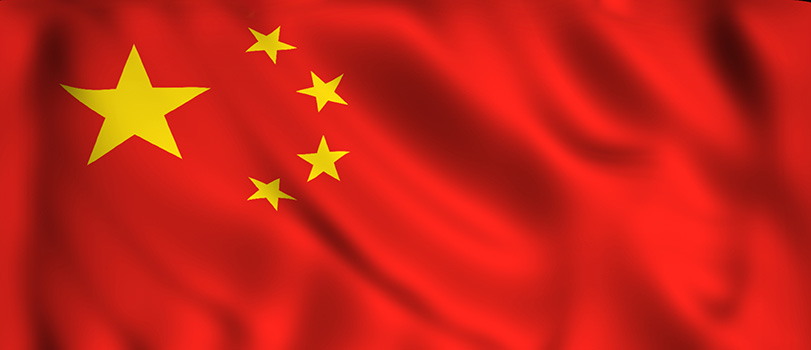©2025 Keller and Heckman, LLP
China Solicits Comments on Food-Contact Substances

China's National Center for Food Safety Risk Assessment (CFSA) has solicited comments on two new food-contact substances, expanded use for two food-contact materials and articles, and six new resins. The substances and specifications are listed below.
New Food-Contact Materials and Articles
- Microfibrillated cellulose pulp (CAS no. 65996-61-4) for use in paper and paperboard at a maximum use level of 5% (calculated as fabric dry weight).
- 2-Butenedioic acid (2E)-, dibutyl ester homopolymer for use in coatings and coating layers at a maximum use level of 2%. An additional restriction is the use temperature shall not exceed 121oC and it may not contact infant food and breast milk.
Food-Contact Materials and Articles with Expanded Use
- Calcium stearate (CAS no. 1592-23-0) for use in polyetheretherketone (PEEK) plastic at a maximum use level of 0.03%.
- 2,5-Furandione, dihydro-, mono-C15-20-alkenyl derivs (CAS no. 68784-12-3) for use in polyethylene (PE) and polypropylene (PP) plastic at a maximum use level of 0.48% and a SML of 30 mg/kg (calculated as Maleic acid). An additional restriction is the use temperature shall not exceed 100oC and it may not contact infant food and breast milk.
New Resins
- Fatty acid, C18-unsaturated, dimers, polymers with caprolactam and hexamethylenediamine (CAS no. 2068097-08-3) for use in polyamide (PA) plastic. Specified SMLs are 15 mg/kg for caprolactam, 2.4 mg/kg for hexamethylene diamine, and 0.05 mg/kg for the sum of dimer of unhydrogenated unsaturated fatty acids C18 and hydrogenated dipolyunsaturated fatty acids C18. Specifications include that it shall be filled at room temperature and stored long-term at room temperature (including hot filling or pasteurization when T≤70°C, t≤2h or T≤100°C, t≤15min). In addition, the substance may not contact infant food and breast milk.
- 2-Propenoic acid, 2-methyl-, polymer with N-(butoxymethyl)-2-propenamide, ethenylbenzene and ethyl 2-propenoate (CAS no. 26589-46-8) for use in coatings and coating layers with SMLs of 6 mg/kg for methacrylic acid, 6 mg/kg for acrylic acid, and ND (non-detect) for N-(butoxide)-2- acrylamide (DL=0.01mg/kg).
- Styrene block polymers with 2-methyl-1,3- butadiene and 1,3-butadiene, hydrogenated (CAS no. 132778-07-5) for use in plastics with a SML of ND for 1,3-butadine and 2-methyl-1, 1,3-butadine and QMs of 0.5% for styrene and 1 mg/kg for 1,3-butadine and 2-methyl-1,3-butadine.
- Phenol, 4,4'-(1-methylethylidene)bis-, polymer with (chloromethyl)oxirane, benzoate (CAS no. 52907-82-1) for use in coatings and coating layers at a maximum use level of 19.7% (calculated as painting formula) and an SML of 0.6 mg.kg for BPA and a QM of 1 mg/kg for epichlorohydrin. In addition, it may not contact infant food and breast milk.
- Polymer of 1,4-bis(hydroxymethyl)cyclohexane,2- methylpropane-1,3-diol, tricyclo(5.2.1.02,7)decan- 4,8-dimethanol,benzene-1,4-dicarboxylic acid, benzene-1,3-dicarboxylic acid, cis-butenedioic acid, 5-isocyanato-1-isocyanatomethyl-1,3,3- trimethylcyclohexane for use in coatings and coating layers at a maximum level of 30%, (calculated as painting formula) with the following SMLs: 5 mg/kg for 2-methyl-1,3-propylene glycol and 4, 8-tricyclic [5.2.1.02,7] decane dimethanol; 7.5 mg/kg for terephthalic acid; 5 mg/kg for m-phthalic acid; and 30 mg/kg for maleic acid. The QM is 1 mg/kg for isocyanate. In addition, it may not contact infant food and breast milk.
- Polymer of butanediol-1,4,ethylene glycol, propylene glycol-1,2,trimethylolpropane, dimethyl terephthalate,isophthalic acid and sebacic acid for use in coatings and coating layers at a maximum use level of 30% (calculated as painting formula) with the following SMLs: 5 mg/kg for 1,4-butanediol; 30 mg/kg for glycol, 6 mg/kg for trimethyl-propane; and 5 mg./kg for m-phthalic acid. In addition, it may not contact infant food and breast milk.
Comments on these food-contact substances are due by March 11, 2020.